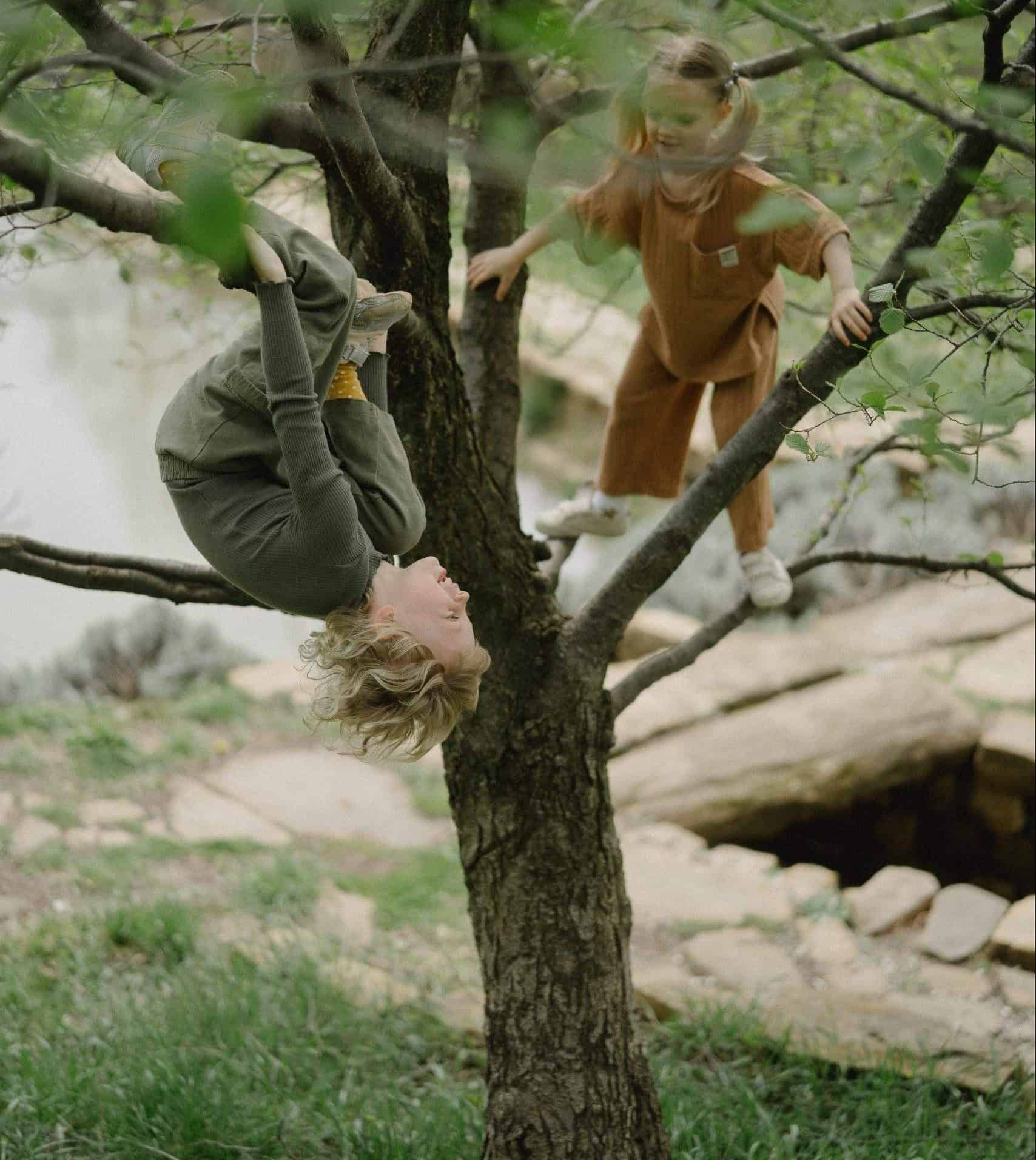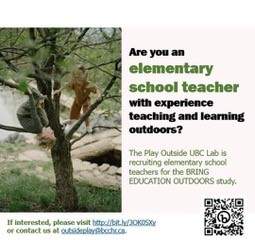
Recruiting teachers for a study on outdoor play and learning in schools
Thank you to Megan Zeni, PhD Candidate at the University of British Columbia, for providing this post.
The Play Outside Lab at the University of British Columbia is now recruiting elementary school teachers who are willing to share photos, videos and learning materials that demonstrate outdoor play and learning in elementary (K-8) schools. If you know an elementary (K-8) school teacher who has experience teaching outdoors, please invite them to visit our webpage to learn more about the study, ethics requirements, and how to participate here.
Teachers who complete the consent form will receive an email from the research team every two weeks with a new request for exemplars. Teachers who are interested in participating, and only want to submit one or two exemplars of outdoor play and learning can do so. There is no requirement to answer each email request as a study contributor. For example, until Dec 20, 2022, we are calling to upload materials for Module 1: Introducing Risky Outdoor Play at School.

Below are some examples of prompts that participating teachers will receive:
a) Bridging outdoor play and learning.
Sometimes teachers can worry that kids are “just playing”. The goal of this module is to make visible the curricular learning and competencies for learning that children engage with during outdoor play. For example, when children jump in puddles and play in rain, they are experiencing the water cycle, and not simply reading about it. When children spend time playing outdoors they might also notice evaporation from moist surfaces and ask questions about cloud formations. Curiosity, joy, and wonder are competencies for learning that are often visible during outdoor play and learning. We are interested in specific examples of where learning lives in your students’ outdoor play.
Video upload suggestions:
-Examples of emergent learning observed during outdoor play (photos or video)
-Voice over narrating the video explaining how you see curricular learning emerging would be great! You can also submit a sentence or two with your exemplars.
b.) What is risky outdoor play and why is risk taking important?
Show us what risky play looks like in your school! We are particularly interested in helping normalize how children thrill seek during outdoor play at school, and how teachers can make space for this kind of play during the school day. Please feel free to let us know how risky outdoor play has benefitted your learners.
Video submission suggestions:
-You or a colleague talking about the importance of Risky Outdoor Play and why risk taking is important
-Identifying how you work through personal discomfort to hold space for children’s play
-Examples of what risky play can look like in schools (photos or video)
-How you co-create boundaries with children
-Benefits observed in risky play
Photo submission suggestions:
-Examples of children engaging in risky outdoor play
-Examples of how boundaries have been negotiated
c.) Freedom within limits – Creating YES spaces
When children engage in play that worries adults, the easiest response is to say no, or ban certain kinds of play altogether. We want to show how schools have created yes spaces for children to engage in risky play under the supervision of caring adults. Some behaviours are only problematic because of their location, or the volume of children involved. Examples we would be interested in gathering could include: a snow ball throwing field, designated climbing trees, hidden nooks, mud kitchens, dig pits, or hills open for toboggans and whatever else you can show us!
Video suggestions:
-Show a tour of your YES spaces
-Explain your process of creating that space
-How a no can become a yes
Photos suggestions:
-Photos of your ‘yes’ space
d.) Observation and the role of the teacher in risky play
Teachers have a duty of care to protect the physical and emotional safety of their learners. We are interested in showing how teachers navigate play challenges and tricky play behaviours within this duty of care. Please narrate the problem as you see it, and how you negotiated the play with your learners. For example, maybe you have a photo of children breaking shared outdoor play resources or a photo of play that would make other adults nervous (but you can describe the physical literacy that the child has developed over time to make this something you can stand back and allow to unfold).
Video suggestions:
-Example of children engaging in risky play
-Voice over narrating the video sent explaining your role as an educator in this scenario
If you are interested in sharing your exemplars, please visit the BE OUT research team’s webpage to learn more about the study, ethics requirements, and how to participate, here.
Please feel free to share this message with elementary school teacher networks that might also wish to contribute to sharing their outdoor play and learning expertise.
If you have any questions or concerns, please do not hesitate to contact the BE OUT research team at outsideplay@bcchr.ca.
The BE OUT research team thanks you for your support!
Photo credit: Megan Zeni

